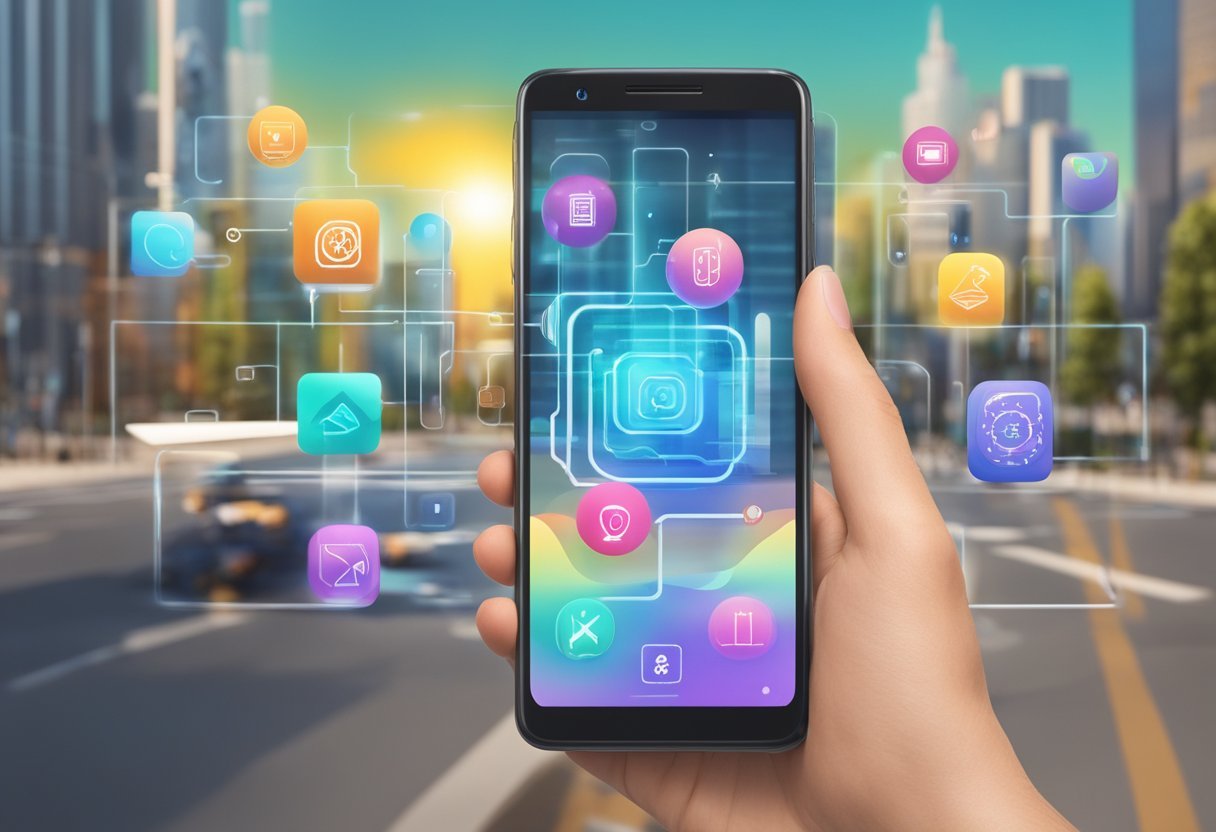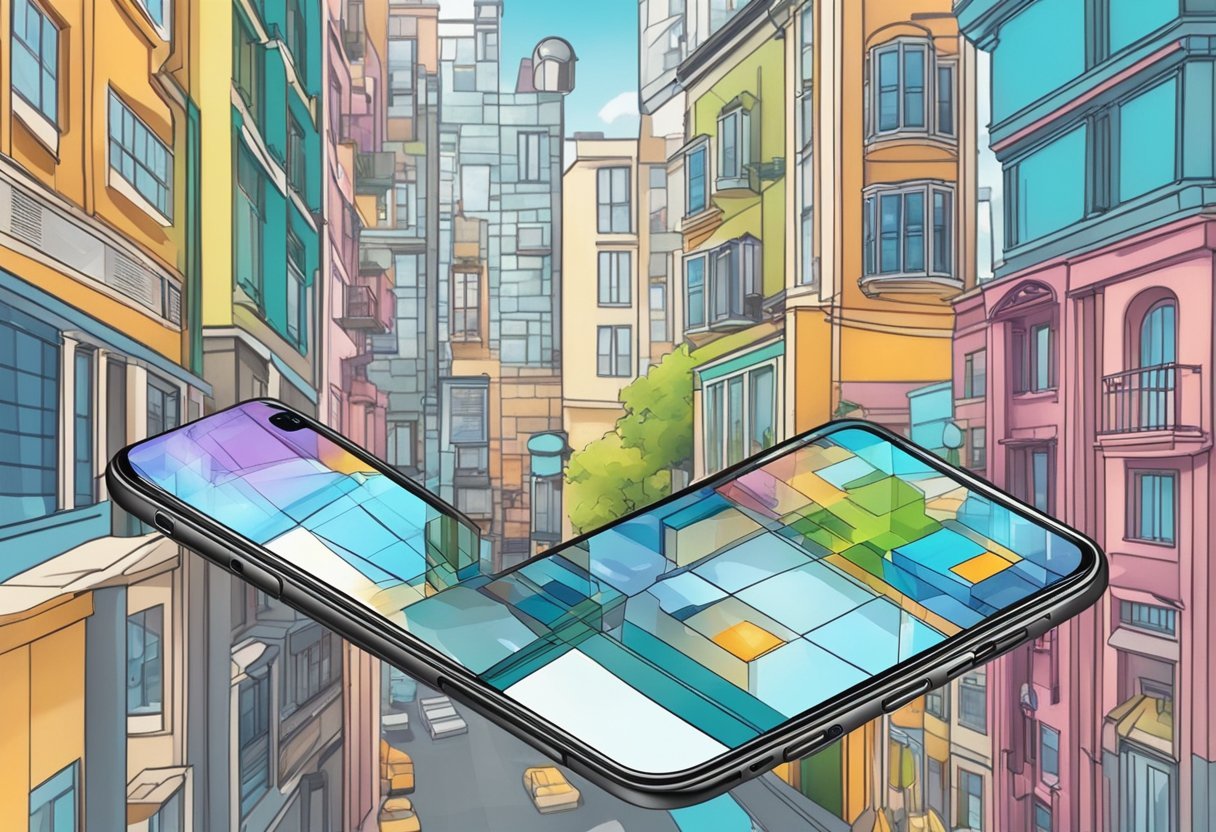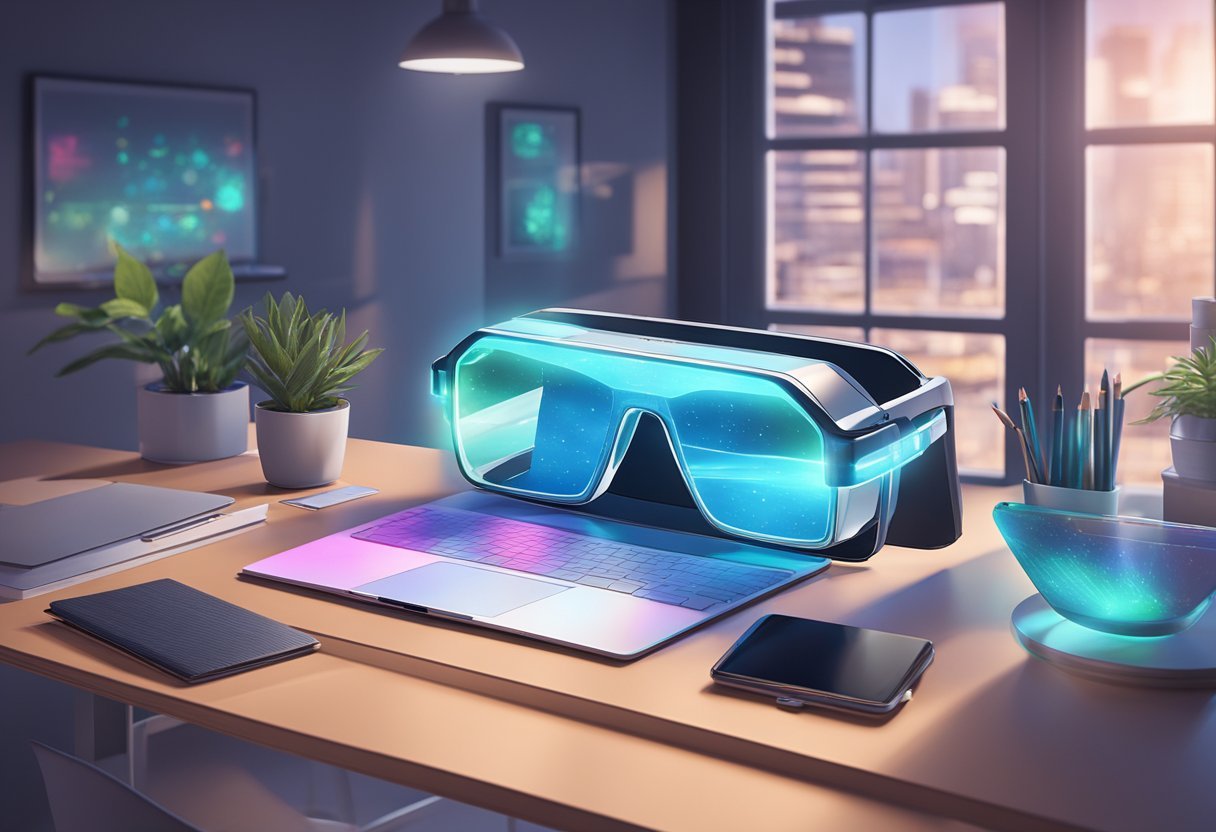Augmented reality is becoming increasingly popular on Android devices, with many users looking for ways to experience this exciting technology firsthand. Augmented reality (AR) is a type of technology that overlays digital information onto the real world, creating a hybrid environment that can be experienced through a smartphone or other device. AR apps on Android offer a range of experiences, from games and entertainment to educational and practical applications. In this blog post, I will share with the best 10 augmented reality apps android and the key and unique functionalities of each of this augmented reality app android.
Understanding Augmented Reality on Android is crucial for anyone looking to explore this technology. AR apps rely on a combination of hardware and software features to create a seamless experience. Android devices typically include a camera, sensors, and other components that can be used to detect and track the user’s location and movements. AR apps use this information to create a virtual environment that can be overlaid onto the real world. Designing AR Experiences requires a deep understanding of these features, as well as the ability to create engaging and immersive content that can capture the user’s attention.
Understanding Augmented Reality on Android
Augmented Reality (AR) is a technology that overlays digital content onto the real-world environment. AR has become increasingly popular in recent years, and it has great potential to change the way we interact with our smartphones. In this section, we will explore the basics of AR and how it is integrated with Android devices.
The Basics of AR
AR technology uses sensors and cameras in smartphones to track the user’s surroundings and overlay digital content on top of it. This digital content can be in the form of 3D models, animations, text, and other visual and audio elements. AR technology has a wide range of applications, from gaming and entertainment to education and training.
AR technology has been around for a while, but it has gained momentum in recent years due to advancements in smartphone technology. Smartphones with high-quality cameras and sensors are now widely available, making it easier for developers to create AR applications.
ARCore and Android Integration
ARCore is a platform developed by Google that enables developers to create AR applications for Android devices. ARCore uses three key principles – motion tracking, understanding the environment, and light estimation – to create a more immersive AR experience.
Motion tracking allows the phone to sense its environment and interact with the world. Understanding the environment allows ARCore to detect the size and location of surfaces in the real world, which is essential for placing digital content accurately. Light estimation allows ARCore to adjust the lighting of digital content to match the real-world environment.
ARCore is available on a wide range of Android devices, and Google provides a list of supported devices on their website. Developers can use ARCore to create AR applications for a variety of purposes, such as gaming, education, and e-commerce.
AR technology is becoming increasingly popular, and it has great potential to change the way we interact with our smartphones. ARCore is a platform developed by Google that enables developers to create AR applications for Android devices. With the help of ARCore, developers can create immersive AR experiences that enhance the user’s interaction with the real world.
10 Best Augmented Reality Apps For Android
- Google Lens
- IKEA Place
- ARCore by Google
- Ingress Prime
- Quiver
- Star Walk 2
- SketchAR
- Just a Line
- Google Translate
- Amikasa
Google Lens
Google Lens is a multifaceted AR app that enables users to interact with the world around them using the camera on their Android device. It can recognize and provide context about objects, scan and translate text, read QR codes and barcodes, and even offer shopping options for items it identifies.
For travelers, Google Lens can be an indispensable tool for understanding foreign languages on signs and menus. For shoppers, it can simplify the process of finding and comparing products online. In educational settings, teachers and students can use Google Lens to learn more about plants, animals, and historical landmarks. The app’s integration with Google Photos also allows users to explore the content of their images in greater detail.
IKEA Place
IKEA Place is an AR application that revolutionizes the way users shop for furniture. By using the camera on an Android device, it allows you to virtually place IKEA products in your space. The app’s accurate scaling helps to ensure that each piece of furniture fits in the desired location.
Users can experiment with different styles, configurations, and colors to design their ideal living space. This app is particularly useful for those moving into a new home, considering a room refresh, or interior designers presenting options to clients. IKEA Place reduces the risk of buyer’s remorse by allowing users to ‘try before they buy,’ ensuring the furniture not only fits but also complements the user’s current decor.
ARCore by Google
ARCore is Google’s platform for building augmented reality experiences on Android devices. It allows developers to create applications that can understand the environment and place digital objects within it. ARCore’s capabilities include motion tracking, environmental understanding, and light estimation to make AR objects blend seamlessly with the real world.
Use cases for ARCore span a wide range, from gaming to educational apps and interactive shopping experiences. For instance, developers can create games that transform a user’s living room into a virtual battlefield, or educational apps that overlay historical facts onto landmarks in the real world.
Ingress Prime
Ingress Prime transforms the real world into a landscape for a global game of mystery, intrigue, and competition. Players join one of two factions and battle for control of landmarks and monuments in their cities. The game encourages physical activity and exploration, as players must visit locations to hack portals and claim territory.
Ingress Prime is not just a game; it’s a social experience that brings people together for events and fosters a sense of community among players. It’s an early example of a location-based AR game that has influenced many other AR gaming experiences.
Quiver
Quiver is an AR coloring app that brings children’s coloring pages to life. By coloring a page and then using the Quiver app to scan it, the drawings leap off the page in vibrant animation. This app makes coloring an interactive and magical experience for kids, promoting creativity and learning. It can be used at home for fun or in the classroom as an engaging educational tool. Quiver can also help teach color theory, storytelling, and digital literacy in an entertaining way, bridging the gap between traditional and digital play.
Star Walk 2
Star Walk 2 is an AR stargazing app that allows users to identify stars, constellations, and other celestial bodies by pointing their Android device at the sky. The app overlays information about what you’re seeing in real-time, providing an educational and immersive experience.
It’s an invaluable tool for astronomy enthusiasts, educators, and anyone interested in learning more about the night sky. Star Walk 2 can also alert users to upcoming astronomical events, making it easier to plan for events like meteor showers or planet sightings.
SketchAR
SketchAR is an application designed for artists and those learning to draw. It uses AR to project virtual images onto a surface, allowing users to trace them. This app is useful for learning drawing techniques, practicing proportion, and experimenting with new ideas. It also offers courses and creative challenges to help users improve their skills.
SketchAR is not just for beginners; even experienced artists can use it to draft compositions before creating a final piece. The app also has a social aspect, allowing users to share their creations with a community of like-minded individuals.
Just a Line
Just a Line is a simple yet powerful AR drawing app that lets users doodle in 3D space. With Just a Line, you can create art anywhere around you, record your creations, and share them as short videos. The app is great for spontaneous creativity and social sharing.
It can be used for artistic expression, playful interactions, or even to visualize ideas in a three-dimensional space. The collaborative feature allows users to connect and draw with others in real time, making it a fun tool for connecting with friends or other artists remotely.
Google Translate
Google Translate is a language translation app with an AR feature that allows users to translate text in real time using their device’s camera. This is particularly useful for travelers or anyone needing to understand written text in a foreign language quickly.
The app can translate menus, signs, and documents, overlaying the translated text directly onto the original image. Google Translate is also helpful for language learners and international business professionals, as it facilitates communication and reduces language barriers.
Amikasa
Amikasa is an AR app that helps users design their space with 3D furniture and decor. By using the camera on your Android device, you can place and style furniture from real brands in your room. Amikasa allows you to customize colors and materials, ensuring that everything fits together aesthetically.
It’s a useful tool for anyone looking to redecorate, as it helps to visualize different products in your actual space before making a purchase. The app is also beneficial for interior designers who want to create a visual representation of their ideas for clients.
Designing AR Android App Experiences

Augmented Reality (AR) is a powerful tool that allows developers to create immersive experiences that enhance the way users interact with the world. Designing AR experiences requires a deep understanding of the technology and the principles of design. In this section, we will explore some of the key design considerations when creating AR experiences for Android.
AR Design Principles
Designing AR experiences requires a different approach than traditional app design. The goal is to create an experience that seamlessly blends the digital and physical worlds. Some key design principles to keep in mind when designing AR experiences include:
- Simplicity: Keep the design simple and intuitive. Use clear visual cues to guide the user through the experience.
- Consistency: Maintain consistency throughout the experience. Use a consistent visual style and interaction design.
- Context: Design for the context in which the experience will be used. Consider the user’s environment and the purpose of the experience.
- Realism: Create a sense of realism by using high-quality 3D models and animations.
Creating Immersive 3D Models
Creating high-quality 3D models is essential for creating immersive AR experiences. The models should be designed to fit seamlessly into the user’s environment and should be optimized for performance. Some key considerations when creating 3D models for AR include:
- Realism: The models should be as realistic as possible to create a sense of immersion.
- Performance: The models should be optimized for performance to ensure smooth rendering on mobile devices.
- Lighting: The lighting in the models should match the lighting in the user’s environment to create a seamless blend between the digital and physical worlds.
- Scale: The models should be scaled appropriately to fit into the user’s environment.
Interactivity and User Engagement
Interactivity is a key component of AR experiences. Users should be able to interact with the digital content in a natural and intuitive way. Some key considerations when designing for interactivity include:
- User Experience: The experience should be designed with the user in mind. Consider the user’s needs and how they will interact with the experience.
- Gestures: Use natural gestures to interact with the digital content. For example, use pinch-to-zoom to resize 3D models.
- Feedback: Provide feedback to the user to let them know that their actions are being recognized by the app.
- Engagement: Use interactivity to create a sense of engagement with the experience. For example, use gamification to make the experience more fun and engaging.
Designing AR experiences requires a deep understanding of the technology and the principles of design. By following the key design considerations outlined in this section, developers can create immersive and engaging AR experiences for Android users.
Popular AR Apps and Their Impact

Augmented reality (AR) has become increasingly popular in recent years, with many apps utilizing the technology to enhance user experiences. In this section, we will explore some of the most popular AR apps for Android and their impact on education, social media, and entertainment.
Educational AR Apps
AR technology has the potential to revolutionize the way we learn by providing interactive and immersive experiences. One such app that has gained popularity is Quiver. This app allows users to print out coloring pages that, when viewed through the app, come to life in 3D. This interactive coloring experience is not only fun but also helps children learn about various topics such as science, history, and geography.
Another popular educational AR app is IKEA Place. This app allows users to virtually place IKEA furniture in their homes to see how it would look before making a purchase. This not only helps users visualize the furniture in their homes but also provides a more convenient shopping experience.
AR in Social Media
Social media platforms have also started incorporating AR technology to enhance user experiences. Snapchat is a prime example of this, with its AR lenses that allow users to add various filters and effects to their photos and videos. These lenses have become a popular feature of the app and have even been used by brands for advertising purposes.
Entertainment and Gaming with AR
AR has also made its way into the world of entertainment and gaming. Pokemon Go is an example of an AR game that gained immense popularity upon its release. The game allows users to catch virtual Pokemon in the real world using their phone’s camera. This game not only provides a fun gaming experience but also encourages users to explore their surroundings.
AR technology has the potential to enhance user experiences in various fields such as education, social media, and entertainment. As the technology continues to evolve, we can expect to see more innovative uses of AR in the future.
Developing AR Apps for Android

Augmented Reality (AR) is a rapidly growing field in Android app development. AR technology enhances user experiences by overlaying digital information on the real world. Developing AR apps for Android requires a specific set of skills and tools. In this section, we will discuss how to get started with AR development, the tools and frameworks required, and how to publish and monetize AR apps.
Getting Started with AR Development
To get started with AR development, developers need to have a good understanding of Android app development and the AR technology. Android Studio is the primary tool for developing AR apps for Android. Developers can use ARCore, Google’s AR platform, to build AR apps.
ARCore provides developers with the tools and APIs needed to create high-quality AR experiences. Google Lens is another tool that can be used to develop AR apps for Android. Google Lens is a powerful image recognition tool that can be used to create AR experiences that respond to real-world objects.
Tools and Frameworks
Developers can use a range of tools and frameworks to develop AR apps for Android. ARCore is the most popular framework for AR development on Android. ARCore provides developers with access to a range of APIs and tools that can be used to create high-quality AR experiences. ARKit is another popular framework that can be used to develop AR apps for Android. ARKit is a powerful tool that can be used to create AR experiences that respond to real-world objects.
Publishing and Monetizing AR Apps
Publishing and monetizing AR apps requires developers to follow the same process as for other Android apps. Developers need to create a Google Play Developer account and upload their app to the Google Play Store. To monetize their app, developers can use a range of strategies, including in-app purchases, advertising, and commerce. Developers can use Google’s AdMob platform to monetize their app through advertising. Google also provides a range of tools and APIs that can be used to enable commerce within AR apps.
Developing AR apps for Android requires a specific set of skills and tools. Developers need to have a good understanding of Android app development and the AR technology. ARCore is the most popular framework for AR development on Android. Developers can use a range of tools and frameworks to develop AR apps for Android. To publish and monetize their app, developers need to follow the same process as for other Android apps.
Challenges and Considerations
Hardware Limitations
When it comes to developing augmented reality apps for Android, hardware limitations can pose a significant challenge. While high-end smartphones are equipped with powerful processors and graphics cards that can handle AR applications, lower-end devices may not have the necessary specifications to run AR apps smoothly.
Developers need to consider the hardware limitations of their target audience and optimize their apps accordingly. This may involve using low-poly models, reducing texture sizes, or implementing other optimizations to ensure that the app runs smoothly on all devices.
Privacy and Security
Privacy and security are also critical considerations when it comes to developing AR apps for Android. AR apps can access a wide range of data, including camera feeds, location data, and other sensitive information. Developers need to ensure that their apps are designed with privacy and security in mind, implementing measures such as encryption, secure data storage, and user permissions to protect user data.
Future of AR on Android
The future of AR on Android is bright, with many exciting possibilities on the horizon. As technology continues to advance, we can expect to see more powerful hardware and software that can support even more immersive and interactive AR experiences. However, there are also challenges to overcome, such as the need for more efficient and accurate tracking technology and the development of more intuitive interfaces that can make AR more accessible to a wider audience.
Developing augmented reality apps for Android can be a challenging but rewarding experience. Developers need to consider hardware limitations, privacy and security concerns, and the future of AR on Android when designing their apps. With careful planning and attention to detail, developers can create engaging and innovative AR experiences that push the boundaries of what is possible with this exciting technology.
Frequently Asked Questions
What are the top augmented reality games available for Android?
There are several AR games available for Android, but some of the most popular ones include Ingress Prime, Pokemon Go, and Reality Clash. Ingress Prime is a multiplayer game that uses AR to create a virtual world where players fight for control of territories. Pokemon Go is another popular game that uses AR to allow players to catch Pokemon in the real world. Reality Clash is a first-person shooter game that uses AR to create a realistic battlefield experience.
How can I enable augmented reality features on my Android device?
To enable AR features on your Android device, you need to make sure that your device is running Android 7.0 or later and has the Google Play Services for AR app installed. You can download this app from the Google Play Store. Once you have installed the app, you should be able to use AR features on your device.
Which AR camera apps are considered the best for Android users?
Some of the best AR camera apps for Android users include Google Lens, AR Ruler, and Just a Line. Google Lens is an app that allows you to use your camera to identify objects and provide information about them. AR Ruler is a virtual measuring tool that uses AR to measure distances and sizes. Just a Line is an app that allows you to draw in 3D using AR technology.
What are some of the best free AR apps for Android?
Some of the best free AR apps for Android include IKEA Place, Star Walk 2, and SketchAR. IKEA Place is an app that allows you to place virtual furniture in your home using AR technology. Star Walk 2 is an app that allows you to explore the stars and planets using AR technology. SketchAR is an app that allows you to learn how to draw using AR technology.
Are there any educational augmented reality apps for Android that are available for free?
Yes, there are several educational AR apps available for Android that are available for free. Some of these apps include Anatomy 4D, Spacecraft 3D, and AR Flashcards. Anatomy 4D is an app that allows you to explore the human body using AR technology. Spacecraft 3D is an app that allows you to explore spacecraft and satellites using AR technology. AR Flashcards is an app that allows you to learn using AR technology.
Can you recommend some augmented reality applications for Android that are available on GitHub?
Yes, some of the best AR applications for Android that are available on GitHub include ARCore-Location, ARCore-Playground, and ARCore-Unity-SDK. ARCore-Location is an app that allows you to place objects in the real world using AR technology. ARCore-Playground is an app that allows you to experiment with AR technology and create your own AR experiences. ARCore-Unity-SDK is a software development kit that allows you to create AR apps using Unity.




